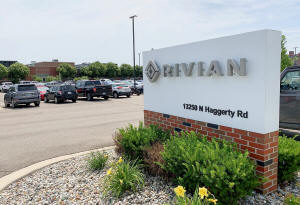|
Following a $1.3-billion capital raise in March, Rivian had said
it had enough money to last it through 2025. But it said this
month it would issue $1.5 billion, sparking concerns among
investors and some suppliers about the company's financial
health and sending shares plummeting.
Seeking to allay those concerns, Rivian CEO RJ Scaringe told
Reuters the new capital raise was meant to create an additional
buffer as it was kicking off meaningful investments to build its
smaller R2 vehicle family. The issue would also make sure "that
we are never at risk of having a overly constrained or overly
tight balance sheet," Scaringe said.
Rivian, which makes R1S sport utility vehicles and R1T pickup
trucks, is set to unveil smaller and cheaper R2 cars. Their
production is expected to begin in 2026.
"We don't control the macro economic environment, we cannot
control political conflict, and those are real risks that exist
not just specific to Rivian," Scaringe said.
"That's a risk to our capital markets and the liquidity of those
capital markets."
The debt issuance comes as higher interest rates have jacked up
borrowing costs. Recent robust economic data as well as
uncertainties arising from the Israel-Hamas conflict suggest the
U.S. central bank might leave interest rates higher for longer.
"I would not say this is any reflection of the degree of
confidence we have for R2 both in terms of execution and in
terms of our cost structure," Scaringe said.
Rivian has focused on boosting production to meet demand and
doubled down on cutting costs to limit cash burn even as the
industry grapples with a price war sparked by market leader
Tesla to stimulate softening demand.
The Irvine, California-based startup beat third-quarter delivery
expectations this month as it produced more vehicles but
disappointed investors by not raising its full-year target of
52,000 vehicles.
Scaringe declined to comment on the production target as the
company is set to announce results early next month.
Rivian's cash balance as of Sept. 30 was estimated to be at $9.1
billion, down from $10.2 billion in June.
(Reporting by Abhirup Roy in San Francisco; Additional reporting
by Ann Saphir editing by Jonathan Oatis David Gregorio and Rod
Nickel)
[© 2023 Thomson Reuters. All rights
reserved.]
This material may not be published,
broadcast, rewritten or redistributed.
Thompson Reuters is solely responsible for this content.

|
|




